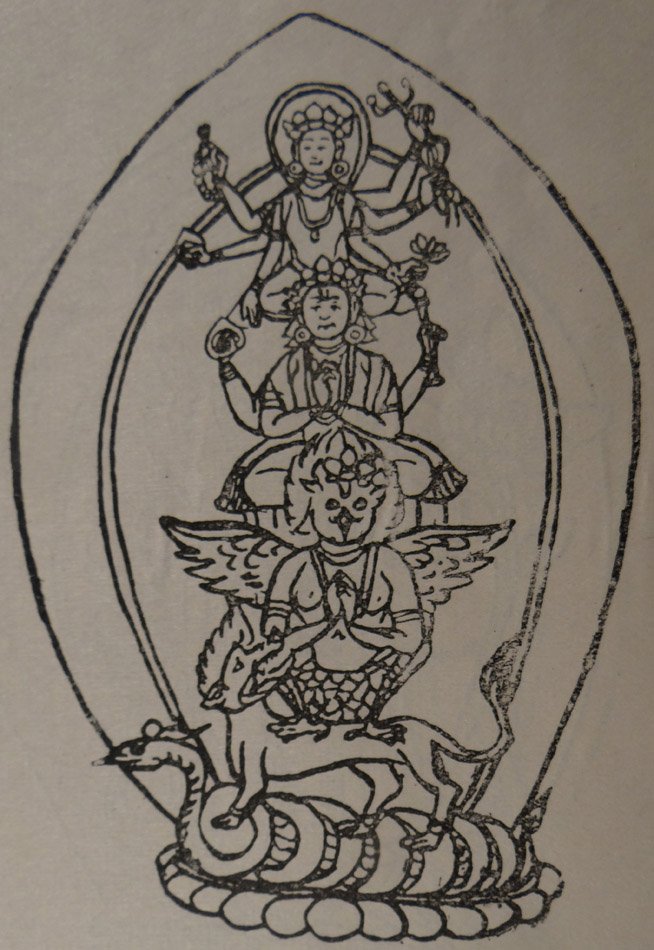The Indian Buddhist Iconography
by Benoytosh Bhattachacharyya | 1958 | 51,392 words | ISBN-10: 8173053138 | ISBN-13: 9788173053139
This page contains an iconography image of 108 forms of Avalokiteshvara (4): Harihariharivahana Lokeshvara and represents of the book Indian Buddhist Iconography, based on extracts of the Sadhanamala English translation. These plates and illustrations represent either photographs of sculptures or line-drawing reproductions of paintings or other representations of Buddhist artwork.
108 forms of Avalokiteśvara (4): Harihariharivāhana Lokeśvara

Fig. 4A: Harihariharivāhana Lokeśvara
This is figure 4 in a series of 108 forms of Avalokiteśvara from the Macchandar Vahal, Kathmandu, Nepal.
4. Harihariharivāhana Lokeśvara. Lowermost is the snake, on it is the lion, over the lion is Garuḍa, Nārāyaṇa rides Garuḍa, and on his shoulder sits Lokeśvara. The Garuḍa has two hands in the Añjali mudrā. Nārāyaṇa has four hands, of which the first pair is engaged in forming the Añjali against the chest; while the second pair has the Cakra in the right hand and the Gadā in the left. Lokeśvara sits in Vajraparyaṅka and has six arms ; the right hands show the rosary, the Cakra and the Varada pose, while the three left carry the Tridaṇḍī, the noose and the Utpala.
The Bodhisattva Avalokiteśvara (The Watchful Lord) also called Padmapāṇi (Lotus bearer) is the spiritual son of the Dhyāni Buddha Amitābha. He is one of the most popular Bodhisattvas of the Buddhist Pantheon having as many as 108 different forms [viz., Harihariharivāhana Lokeśvara].
